(281) 844-4458

Welcome to Custom Sailboat Trailers

Trailer Facts
- We build galvanized sail boat trailers
- Some of our trailers are refurbished.
- They are all float on trailers
- We build extensions for launching
- Our used trailers are rebuilt stronger
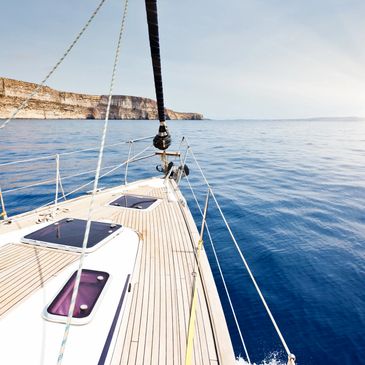
- We also move boats
- Transport Boats
- Trailer Parts
- Tongue extensions
- Side Guides
- Safety Chains
Interesting Facts
- In 2008 the EPA took the lead and nickel out of the hot dipped galvanize. I bought all the hot dipped galvanized frames i could,built before 2009 at scrap prices,so the trailer manufacturers could buy the aluminum to get a head start in the aluminum trailer business. Some of the trailer builders that did not get in the race,went under.Sportsman trailers in Texas was one of them. I bought about 200 of there frames. These frames were all built for mono hulls.I build my sail boat trailers with these frames. I go up with a 2" galvanized pipe,then weld two 3/4" nuts near the top.I brace the risers with two are three 1 1/2"x1/4" angle iron braces with a 1 1/2" pipe telescoping up and down with a swivel pad or runners.
- J 22 and J 24 trailer fits most any boat with a deep draft.The axles are on slides U-bolted to frame so you can add another axle.
- This trailer is 30 ft . It will adjust to any sail boat are mono hull boat. It is galvanized It is 42 years old. I has the good galvanize.and great American steel.
- Galvanized with three 5200 lb axle, 10 risers, adjustable to fit deep drafts
- 25 to 28 ft shallow draft or swing keel
- Painted trailer with 10 risers, 37ft long, with three 5200 lb axles,surge brake on two axles. It is ready to go. Call it will sell fast.
- This trailer carried the boat 10,000 mi. It is for sale for $2,500.I will add a bow stop
- Yard trailer that can be converted later for road trailer we can add one more 4500 lb axle and adjust the bow stop. The bow stop is U-bolted to the tongue. When you have completed the work and ready for the road. We can assist you in completing the trailer.
- Rubber bushing under keel board to take the shock off the keel.
Painted trailer for Catalina 25
- Hunter 26
- Oday24
- $2300
- 24 ft frame for 30 ft boat for three axles
- This trailer was made for a 5500 lb boat. We are able to add another slide with axles, brake, and fenders to accommodate an 8000 lb boat. Also the two axles were on slides U-bolted to frame.
- J27 1985 had to add another axle. It had 700 lbs of water absorbed in hull. By having axles on slides, we saved him about $2200.One happy camper.
more trailers
- Trailer on right, before uprights we go up with 2" galvanize pipe with 1 1/2" to telescope up and down with swivel pad on top.On top of 2" we weld two 3/4" nuts to hold the 1 1/2" That is a big bolt.
- Trailer frame before up rights installed
- This picture is to show you the extensions with tires we build.We can build any length. We also build extensions for the tongue.These are built with 3x3 tubing,no wheels. if they are under 8 ft we can ship for under $50.
Photo Gallery
Copyright © 2022 Custom Sailboat Trailers - All Rights Reserved.
Powered by GoDaddy

You can enjoy the reliability and performance of a Load Rite trailer for your sailboat by specifying a custom trailer through your dealer.
We combine our modular pods with a keel board and winch stand options on any number of Load Rite or 5 STARR bunk models to conform to many sailboat applications. Each trailer must be specified on an individual basis. To get started, download the attached sailboat trailer specifications document before contacting your local Load Rite dealer . Your dealer will collect the model number and other details about your boat and work with our Customer Service and Engineering staff to come up with a recommendation and a quote for your Load Rite trailer.
All of these features are backed by the industry leading Load Rite 2 + 3 Warranty.
Specifications subject to change without notice. Not responsible for publishing errors.
STANDARD FEATURES

Galvanized Steel Frame
Tubular structural steel, fully hot dip galvanized, provides the ultimate finish for any boat trailer. Tubular design shrouds wiring and brake lines from damage. All machining and welding is performed before galvanizing, so there are no surfaces left unprotected from a boat trailer’s ultimate enemy: corrosion.
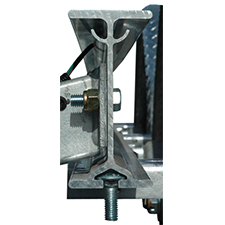
Patented Aluminum I-Beam Frame
Patented designs offer many features that add functionality to a great look. Integrated wire gutter beneath the top flange securely protects wiring and brakelines. Models to 7,300 lbs. capacity feature a captured fastener channel along the bottom flange offering invisible mounting points for other features. Web mounted crossbars strengthen the overall frame assembly.
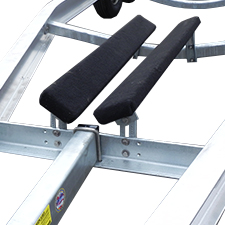
Galvanized Crossbars and Tongue
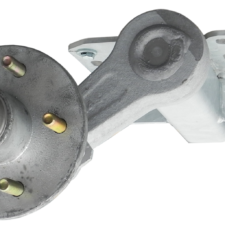
Torsion Axles
Torsion axles provide independent suspension, exceptional rigidity, corrosion resistance, and a far superior ride to any leaf spring suspension. Available on most models.
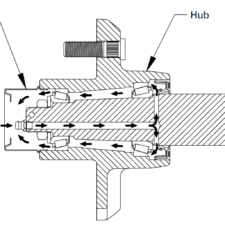
Greaseable Hubs
Trailer with peace of mind knowing that you’ve inspected the condition and topped off the lubricant level in each hub of your trailer.
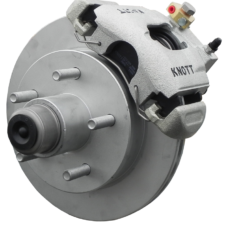
Disc Brakes (Where Installed)
This trailer is equipped with disc brakes (where installed). Load Rite recommends disc brakes on all wheels where available. Disc brakes are self-adjusting and self-cleaning and require minimal maintenance in order to continue to deliver top performance. Follow maintenance tips in your Owners Manual for more detailed instructions.
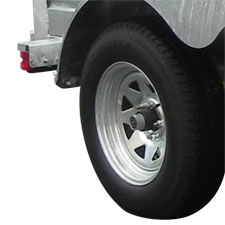
DOT Rated Tires and Lighting
All Load Rite original equipment tires and lighting components are fully DOT approved.

Balanced Wheels 13″ and Larger
CounterAct Wheel Bead Balancing is now included on all 13″ and larger wheel assemblies as a standard feature. The wheels dynamically balance during each use. Visit counteractbalancing.com for more information.
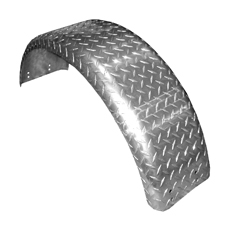
Aluminum Diamond Plate Fenders
A stylish design combined with extreme durability. Standard on all single axle models with 13″ and larger wheels.
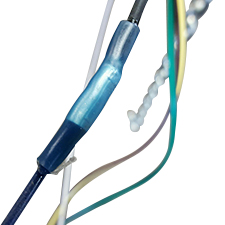
Heat-Shrunk Sealed, Concealed Wiring
Standard equipment on all trailers 17′ and longer except welded frame models.
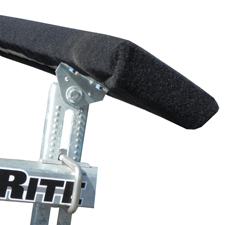
Adjustable Carpeted Bunks
Traditionally known as V-bunks, this system offers both high strength and a wide range of adjustability. Out of adjustment? There are shorter and taller bolster brackets available in many heights.
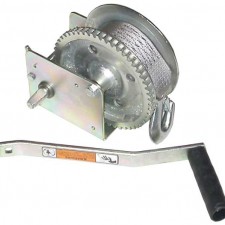
A winch is standard equipment on all boat and PWC models. Capacity and features vary by application.
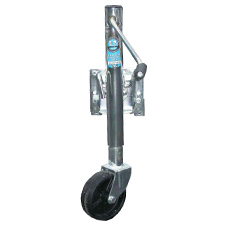
Tongue Jack
Tongue jacks are standard equipment on all Load Rite Elite models 90″ wide and wider except two-place PWC models, all 5 STARR models, and all UT, EQ, and CH models. Appearance and specifications vary by application. Tongue jacks are optional on all other models.

NATM Certified
Each year Load Rite trailers undergo a detailed inspection process in order to earn the right to proudly display this certification on products we manufacture.
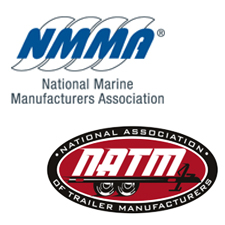
NMMA / NATM Certified
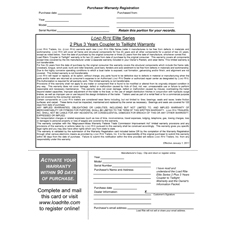
2 Plus 3 Years Coupler to Taillight Warranty
Load Rite’s premiere warranty exclusive to our Elite line of trailers.
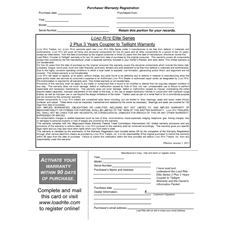
102″ Overall Width (96″ and Wider Models)
Add extra width to standard 96″ wide trailers.
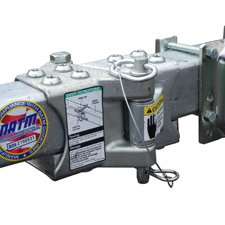
Swing Tongue
Applications are limited by trailer capacity and tongue length. Not available on models exceeding 6,000 lbs. capacity. Consult with a dealer.
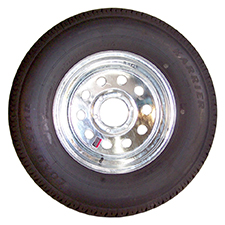
Radial Tires
Smoother riding and longer wear life than many bias-ply tires. A highly recommended upgrade. Available for 13″ and larger wheels.
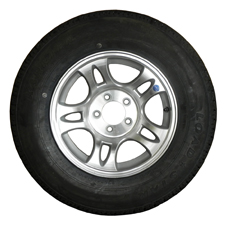
Aluminum Wheels
A stylish option available with bias-ply or radial tires for most models in 12″, 13″, 14″, 15″ and 16″ sizes.
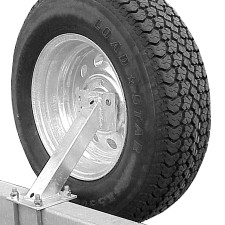
Spare Tire and Carrier
The most important option to consider, every trailer should have a spare tire readily available. Consult dealer for recommended bracket for individual application.
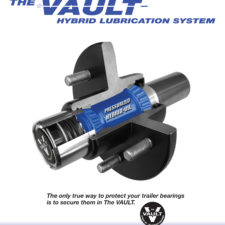
Vault® Hubs
Vault® – The VAULT® “Hybrid Lubrication System” uses a semi-fluid oil in a pressurized chamber to give you the ultimate in wheel bearing lubrication and protection. At ambient temperatures the oil is thick with a viscosity approaching grease. As the bearing temperature rises during towing, the VAULT’s Hybrid Oil thins out replenishing the bearings with lubricant and dissipating heat. No inspection, no maintenance and no service required. *Vault® hubs require Dexter axle. Vault® and Kodiak® stainless disc brakes cannot be combined.
Consult a dealer to confirm application.
Brakes on All Axles
Important Safety Issue – Brake Requirements
Brake laws vary by state and require dealers to sell trailers that comply with the brake laws of the state where the trailer will be registered. This is a very important safety issue . For full information contact the appropriate state Motor Vehicle Department. As always, Load Rite recommends brakes on all axles where available.
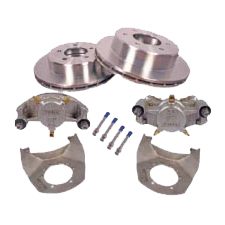
Stainless Steel Disc Brakes
Optional stainless steel brakes available for most 14″, 15″ and 16″ wheel applications. Can be used with surge and electric over hydraulic actuators.*
May require optional axle installation. Check with your local dealer before ordering.
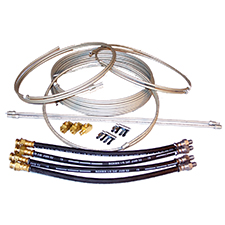
Stainless Brakelines
A valuable upgrade to any trailer, but especially those to see service in coastal regions with salt water exposure.
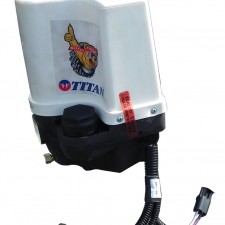
Electric Over Hydraulic Brakes
EOH brakes offer electric in-cab control of standard hydraulic disc brakes. Requires in-cab controller and 7-pin round electrical connection to the tow vehicle.
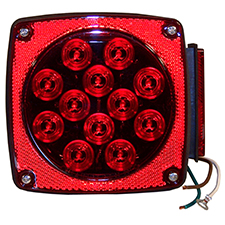
LED Lighting
LED lights offer far greater reliability than incandescent fixtures. Long-lasting and waterproof design make these lights ideal for any trailer application.
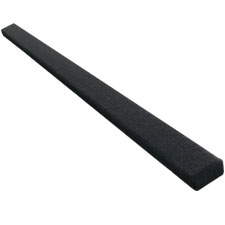
2″ by 6″ Bunks
Marine grade carpet over 2″ x 6″ dimensional lumber.
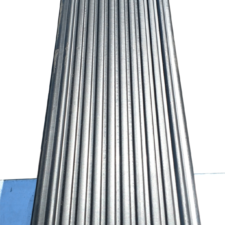
Plastic Bunk Covers
These multi-purpose covers provide a smooth surface to help a metal-hulled boat or pontoon to slide easier when launching and loading. They also offer an insulating barrier to help prevent corrosion for metallic hulled craft. Protect your aluminum hull.
Highly recommended for metal-hulled boats and pontoon applications. Not recommended for gel-coat, plastic, or painted metal hulls.
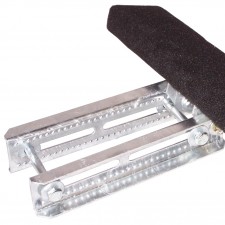
Steady Rest
Carpeted bunk section positioned above and perpendicular to the trailer tongue. Provides an extra resting and balance point, and helps prevent keel contact with the tongue when loading in certain ramp conditions.
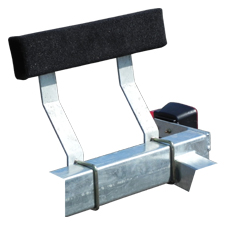
Carpeted Side Guides
Standard on most skiff and jon models.
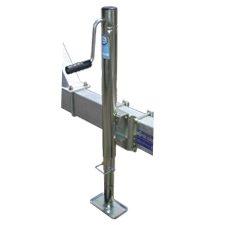
Drop-Style Tongue Jack
An upgraded jack that provides greater capacities and fast setup with no need to swivel.
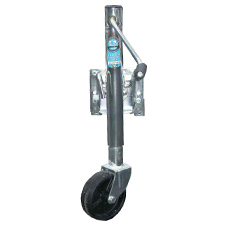
Tongue jacks are recommended on all trailers. Appearance and specifications vary by application. Tongue jacks are optional on all models where not original equipment.
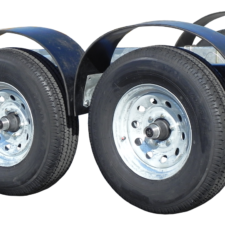
Rubber Fenders
Rubber fenders are intended for use on dealer yard trailers. Yard trailers need the flexibility to adapt to many different hull shapes without imparting any damage in the process. Rubber fenders minimize the possibility of damage should the fender contact the boat hull.
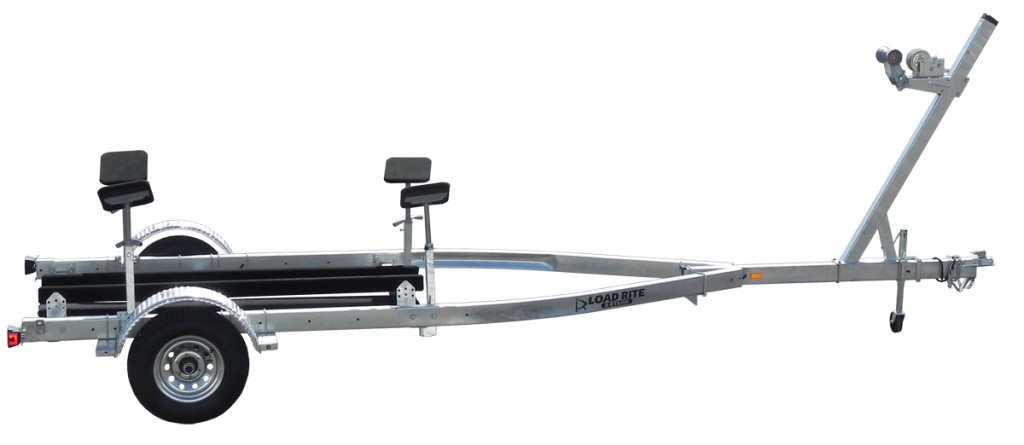
Sailboat 5S-213600VT
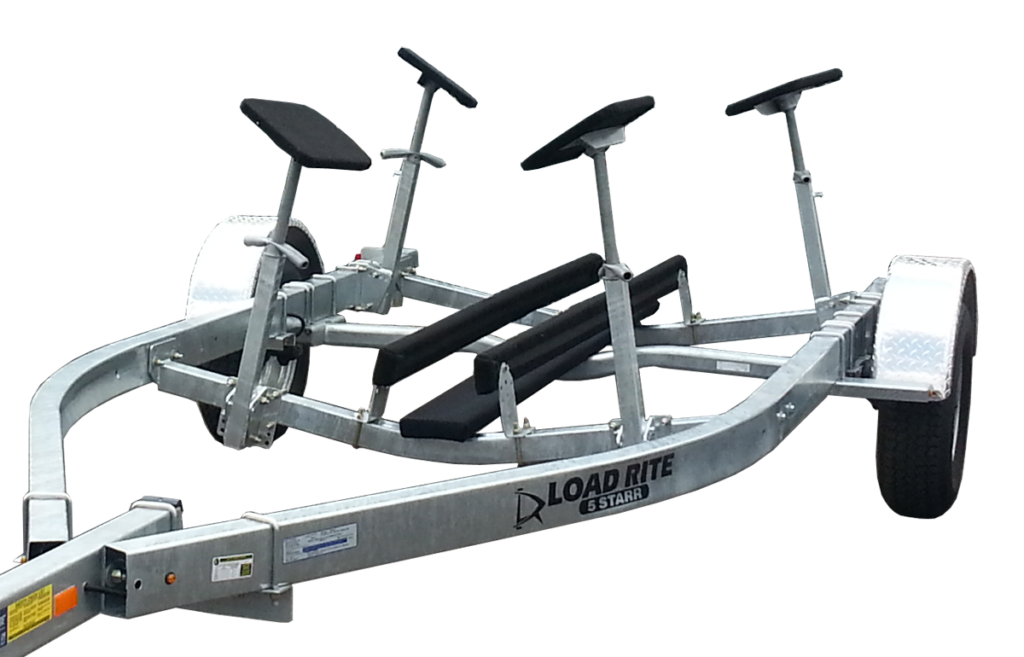
McGregor Sailboat
26 McGregor Sailboat on LR-AB25T6000102LT2 with modifications.
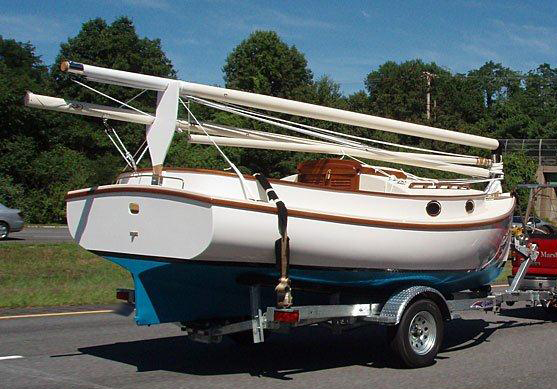
Marshall-Sanderling
Marshall-Sanderling on a modified 182800102VT.
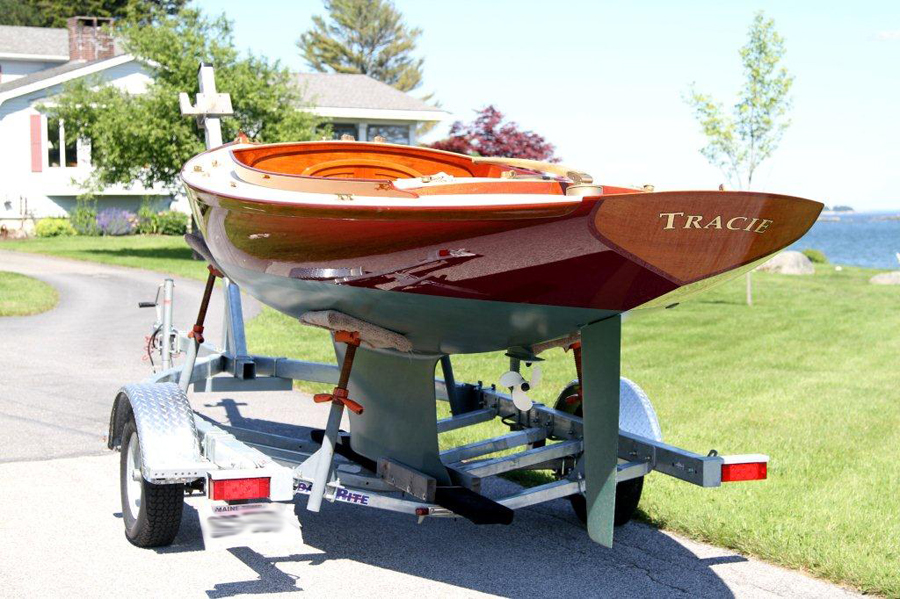
Muscugos 18
Muscugos 18 on Load Rite 18240096VT with dealer installed support system.
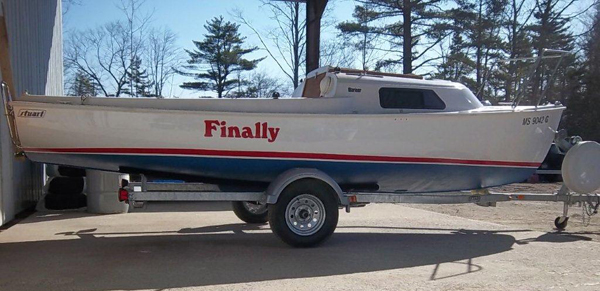
Stuart 19, similar to Rhodes 19, on a 5S-17220090VW.
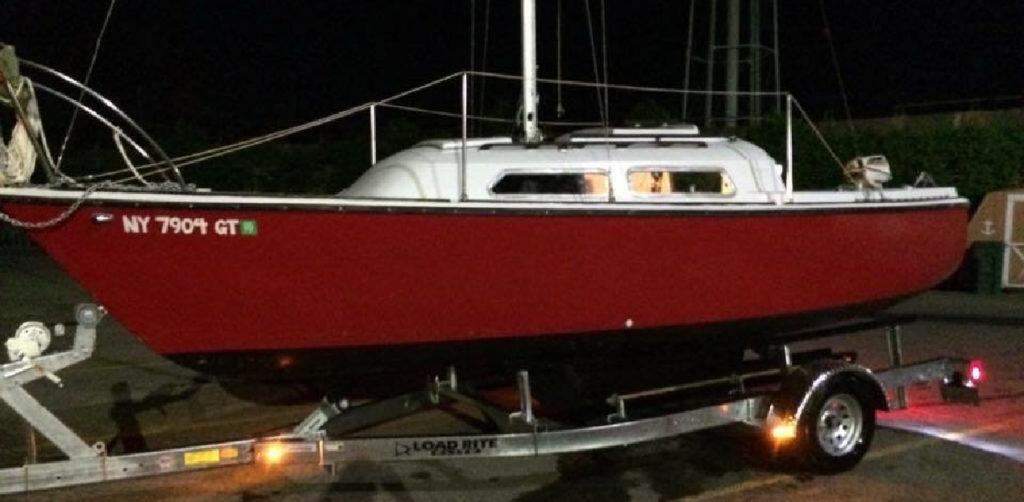
On a custom fit 222650VSGG0.
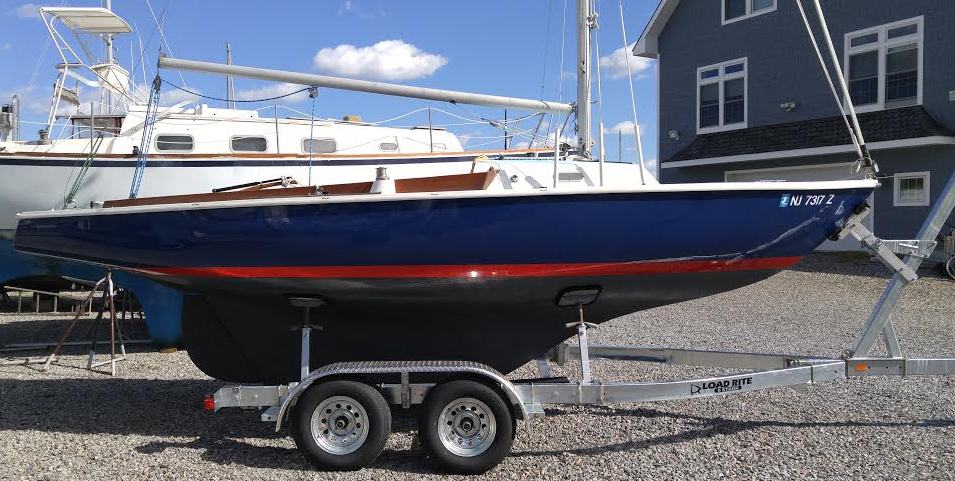
On a custom fit pod trailer.
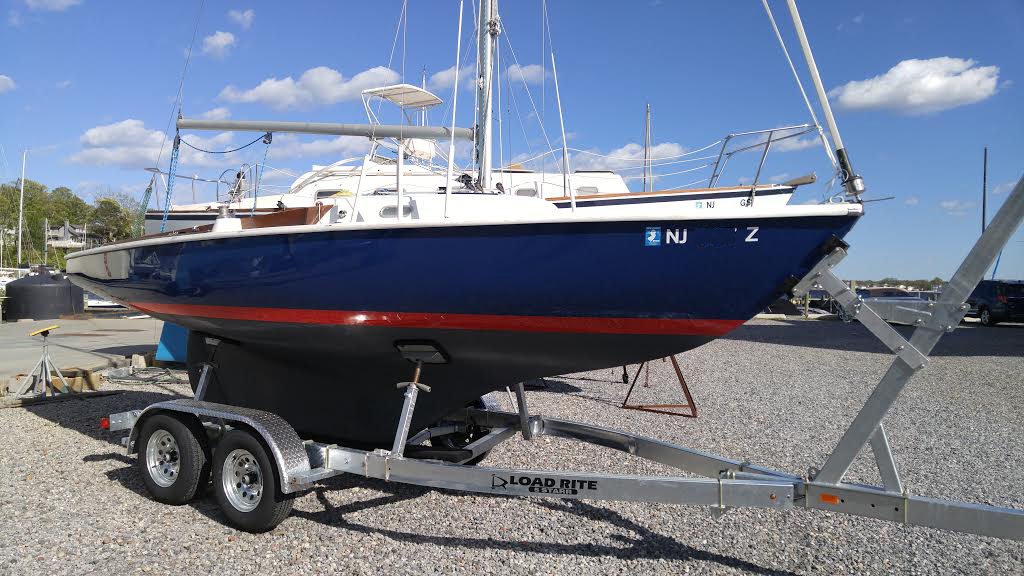
Pearson 22 2
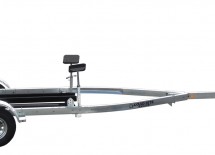
Warranty Information
Owners manual.

My Cruiser Life Magazine
7 Best Trailerable Sailboats for Cruising
Many sailors balk at the idea of leaving their boat in the water at a marina. Slip fees are expensive, and maintenance bills get bigger the longer you leave a boat in the water. However, if you want a boat under 30 feet long, there are trailerable sailboats that will fit the bill.
Like any boat purchase, you’ll need to analyze precisely what kind of trailer sailer you want. Will a simple weekend sailboat suffice, or do you really need the best trailerable cruising sailboat you can find?
Here’s a look at some of the pros and cons of the best trailerable sailboat. Plus, we’ll look at how to compare them for your purposes.
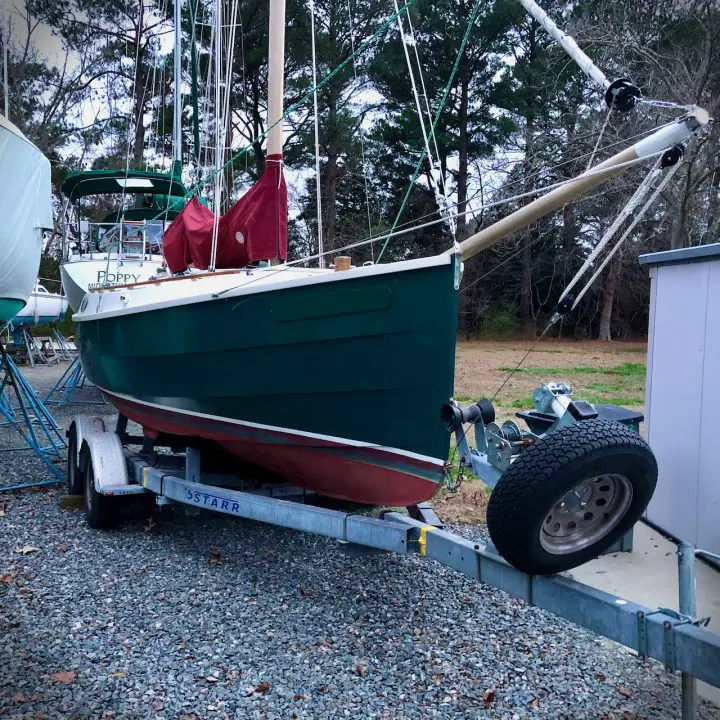
Table of Contents
Best trailerable sailboats, easy to launch trailerable sailboats, quick setup time, towing weight, catalina 22/25 “pop-top”, com-pac horizon cat for classic coastal cruising, marshall sanderling — small, portable, classy, west wight potter 19 — the tiny go-anywhere sailboat, seaward 26rk with retractable lead keel, corsair f-24 trimaran – sporty sailing, macgregor 26m — maximum speed meets maximum living space, long-range cruising boats, 7 best trailerable boats – a recap, what’s the best trailerable sailboat for a cruise, trailerable sailboats faqs.
- Catalina 22/25
- Com-Pac Horizon Cat
- Marshall Sanderling
- West Wight Potter 19
- Seaward 26RK
- Corsair F-24 Trimaran
- MacGregor 26M
| Boat | Pros | Cons |
|---|---|---|
| Catalina 22/25 with Pop-Top | Standing headroom when pop-top extended; Feels much larger than it is; Allows freedom of movement for cooking, changing, etc | Pop-top only provides headroom in small section of boat; Later models lacked this feature |
| Com-Pac Horizon Cat | Well built; Quick-rig system for fast & simple setup; Separate head; Space to lounge | No mention of cons |
| Marshall Sanderling | Easy to sail & tow; Traditional charm; Fiberglass hull; Option for electric motor | Very small for cruising; No galley; Toilet not enclosed |
| West Wight Potter 19 | Reputation for go-anywhere cruiser; Hotplate, sink & porta-potty packed in; Easy setup & towing | Extremely tight quarters; No mention of cons |
| Seaward 26RK | High quality construction; Retractable keel provides stability & shallow draft; Lots of amenities | Heavy – 6,000 lb towing weight |
| Corsair F-24 Trimaran | Very lightweight & easy to tow; Offers adrenaline-pumping performance sailing | Not ideal for offshore/rough conditions |
| MacGregor 26M | Massive interior space; Towable behind most vehicles; Fast powerboat & sailboat capabilities | Not built for offshore use; Not appealing for hardcore sailors |
We’ll get into more detail about each brand in my post today, so hang tight!
What Is a Trailerable Sailboat, Exactly?
For this article, the priorities for a trailerable sailboat are:
- Easy to launch
- Require minimum setup to launch and store
- Lightweight enough to be towed by the average vehicle
Before you can really classify a sailboat as trailerable, you need to evaluate and narrow your search criteria. Truthfully, 50-plus-foot ocean-going sailboats are regularly put on trailers. But that’s done commercially, on a big rig, with special permits for oversized loads, and even led cars.
That probably isn’t what most people mean when they think of a trailerable sailboat. But what is the priority here, the trailerable part or the sailboat part? Compromises are going to have to be made somewhere.
If you’re looking at the 20-foot-and-under sailboat crowd, finding a trailerable example should not be hard. Most sailboats this size are designed for trailers anyway since they aren’t the sort of boats people want to pay to leave in a slip year-round.
Things get more interesting when you look at the 20 to 30-foot boats. In this class, there are stout ocean-going cruisers with deep keels and lightweight centerboard trailer sailboats designed from the get-go to be trailered by the average car or SUV. The differences between these boats are night and day.
Sailboats often have a hard time at boat ramps. First, deep keels mean that the trailer must extend farther into the water than the average boat ramp allows. This means the ramp needs to go back far enough, and the trailer tongue needs to be long enough not to swamp the car.
If you have a boat like this, you’ll need to find the right boat ramps. Unfortunately, not all ramps are created equally. If your boat draws more than two or three feet on the trailer, you’re going to be limited to steep, paved, and high-quality boat ramps. Unfortunately, those aren’t standard features, so your cruising grounds are going to be limited.
Usually, ramps aren’t built steeply because they are often slippery. Your tow vehicle will need excellent traction and torque to pull your fully loaded boat out of a steep ramp. The steeper the ramp, the more trouble you’ll have.
The alternative to finding steep ramps is to use a trailer tongue extender. This lets you get the trailer into deeper water without swamping the tow vehicle. But it also means that the ramp needs to extend deep enough. Many ramps end abruptly. Allowing your trailer to sink off the edge is an excellent way to get stuck or pop a tire.
Pick a boat as easy to launch and retrieve as a similarly sized powerboat to remove all of these boat ramp problems. The soft chines of most sailboats will always require a little more water, but a swing keel and the hinged rudder raised mean that the boat can sit low on the trailer bunks. That way, you only need one or two feet of water to launch, an easy feat at nearly every boat ramp you can find.
The next consideration for a sailboat to be portable enough to call it “trailerable” is the amount of time it takes to step the mast and get it ready to cruise.
To accomplish this, you need a mast that can be stepped by a two-person team–maximum. Ideally, it will have some tabernacle hardware to enable one person to do the task for solo sailing.
There is an entire family of pocket cruisers that could ideally fit on trailers. But you won’t find the Fickas or the Falmouth cutters on my list, simply because they aren’t easy to launch or easy to rig. But, of course, they’re also too heavy for most vehicles to tow, which leads us to the final point of excluding them this trailable pocket cruiser’s list.
One of the most significant financial burdens the trailer sailer faces is their tow vehicle. You are all set if you already drive a two-ton dually diesel pickup truck. But if your daily driver is an SUV or light pickup, you need to think long and hard about the math of the towing equation.
Whatever boat you buy cannot exceed the towing rating limits of your tow vehicle. If you don’t have a tow vehicle, you’ll need to buy one. This will double or triple the cost of getting a trailer sailer in most cases. For the same money, you may want to look at a boat that stays in the water at a traditional boat slip. For the cost of a trailer sailer and a tow vehicle, you can probably step into a nice boat that is larger and more comfortable than any towable.
If you have a tow vehicle, you need a light enough vessel for it to tow. Most modern SUVs tow less than 2,500 pounds. Anything more than 5,000 will require a full-size pickup. Remember that the tow weight isn’t just the boat’s displacement—it’s the empty hull weight, plus the weight of the trailer and any extra gear you need to pack into the boat.
Finding a vessel that fits these limitations on weight isn’t easy. If the manufacturer’s goal is to make it towable, immediate limits are placed on the materials they can use. This means less seaworthiness since boats are built light and thin. As far as stability goes, lead keels are generally out, and water ballast systems or centerboards might be used instead. It doesn’t mean these boats aren’t safe and fun, but they aren’t designed for rough conditions, crossing oceans, or living on in the water full-time .
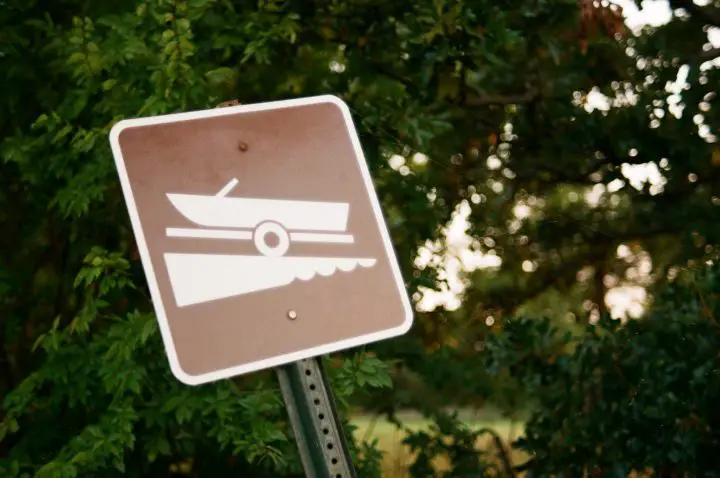
7 Best Trailerable Cruising Sailboats
There are more trailerable sailboats out there than you might imagine. Here’s a look at seven popular options of all shapes and sizes to give you a taste of what you might want to take to sea.
The boats here are selected for their storage and living space. With these boats and a little outfitting, you can spend weeks gunk-holing in the Chesapeake Bay or island hopping the Bahamas. If you broaden your scope to include daysailers with no cabin space, there are countless more options.
One of the worst parts of a small trailerable sailboat or pocket cruiser is the lack of stand-up headroom. One clever solution that you’ll find on some weekend sailboat types is the pop-top.
The pop-top is simply an area around the companionway hatch that extends upward on struts. So when you’re at the dock or anchor, you get standing headroom down below—at least right inside the pop-top.
You can build a canvas enclosure for your pop-top to use it in all weather. A pop-top makes your boat feel much larger than it is and allows you to move freely to cook or get changed down below or even do a nice boat bed area.
Later models of the Catalina Sport 22 and Capri 22s lacked this cool pop-top feature, so if you want it, you’ll need to seek out an older model on the used market.
Com-Pac has been building small sailboats since the early 1970s. They currently sell two lines, each with various-sized boats. All are well built, and a majority of their boats are trailerable.
Most interesting at the Com-Pac traditional catboats . The rigging is more straightforward than modern sloops, with only one large mainsail. Com-Pac boats come with a unique quick-rig system to make getting on the water fast and simple.
The Horizon Cat Coastal Cruising has a displacement of 2,500 pounds with a 2’2″ draft when the board is up. She has a separate head forward and space to lounge either topside or down below. The smaller Sun Cat has slightly few amenities but shaves off a few feet and pounds, making it easier to tow and it is one of these amazing small sailboats. Com-Pacs features stub keels, so their centerboard and hinged rudder do not take up space in the cabin.
On the sloop rig side, the Com-Pac 23 comes in a 3,000-pound traditional sailboat or a very interesting pilothouse. Both are incredibly livable for their size , with shallow two-foot-long fixed keels and high-quality construction.
Another option if you like catboats is the Marshall Sanderling. This salty 18-footer oozes traditional charm , all while being easy to sail and easier to tow. And while she has wooden boat lines, she has a modern laminated fiberglass hull.
The Sanderling has a 2,200-pound displacement, so tow weights will be around 3,000 pounds. At only 18-feet, she’s on the small side for cruising. The cuddy cabin has no galley, and the portable toilet is not enclosed. But that small size means a simple boat that’s easy to maintain and take anywhere.
An electric motor package is an exciting option on this weekend sailboat!
View this post on Instagram A post shared by @marshallmarinecat
You can’t mention tiny trailer sailers without touching on the famous West Wight Potter . These 15 and 19-foot pocket cruisers have earned a worldwide reputation as the ultimate go-anywhere coastal cruiser.
The West Wight Potter 19 offers the most living space for staying aboard and cruising. So even though its dimensions are diminutive, this little boat packs a lot in. There’s a single burner hotplate and sink and a porta-potty tucked under a cushion. Yes, it’s tight—but the company claims the little boat can sleep five people. Any more than two will feel pretty crowded, however.
The boat comes standard with a mast-raising system that a single person can manage alone. It has a daggerboard for a shallow draft of a half-foot when the board is up. The total towing weight is around 1,500 pounds, which means nearly any car can tow a West Wight Potter.
This little-known trailer sailer is produced at the same Florida factory that makes Island Packet Yachts. That should give you a little bit of an idea of what sort of boat it is—trailerable, yes, but also high-quality, beautiful, and built for cruising. In other words, it’s one of the nicest all round pocket cruisers and it feels like a much larger boat.
The Seaward is easily the saltiest boat on this list . It’s beefy and seaworthy. Instead of a lightweight centerboard, Seaward fits the RK with a bulb-shaped retracting keel. Other big-boat items include a Yanmar diesel inboard motor and an enclosed head. The spacious cabin of the boat features a double berth and is ready for salt water cruising.
According to sailboatdata.com , the tow weight of the 26RK is 6,000 pounds. With the keel up, the draft is 1.25 feet.
Multihull sailors need not feel left out from the trailer sailer club and the pocket cruiser. Beyond the ubiquitous beach Hobie Cat, there are not many options for catamarans. But trimarans are uniquely suited to be towed.
Why? For one thing, performance oriented boats like trimarans are based on it being built light. There is no ballast—a trimaran’s stability comes from its two outer hulls. Additionally, the living space is entirely housed in the central hull–the outer floats are small and sometimes foldable. Finally, there are no keels on tris, so they are extremely shallow draft and perfect for trailering.
If you’re looking for adrenaline-pumping sporty and fun sailing, it’s impossible to beat what a trimaran will offer. Let’s not beat around the bush—most of the trailer sailers on this list have hull speeds around five knots. The Corsair has no such limits, routinely sailing at 15 knots or more .
The new Corsair 880 trimaran has an unloaded weight of 3,659 pounds. It is trailerable behind a big SUV or small pickup and is probably the most fun sailing option that is trailerable at all.
An even more portable option is the older Corsair F-24. It has a light displacement of under 2,000 pounds—so nearly any SUV can tow it.
MacGregor owns the market on trailerable motor sailers since they more or less created the product to fit the bill. The MacGregor 26 is not like other boats. The design combines a planing powerboat with a centerboard sailboat. Imagine scooting along at 20 knots or more when the wind is down or enjoying a sporty sail on a breezy day–in the same boat.
The entire boat is built from the ground up for towing and long-range sailing. So if you want a big sailboat that you can tow behind pretty much any SUV, the MacGregor has to be on your list.
Depending on the model, the 26-foot-long boats have incredibly light dry weights of between 1,650 and 2,350 pounds. Considering the massive volume of the roomy cabin, the ability to tow such a large vessel opens up an entire world of opportunities for owners.
It’s not all good news, of course. MacGregor owners love their boats, but they are built light and are not ideally suited for offshore cruising or rough weather. But in bays and for coastal sailing on nice days, few boats can get as much use as a MacGregor.
The motorboat capability of the 26M and 26X might not appeal to hardcore sailors, but for those looking to maximize their use of the boat depending on the weather, their mood, or location, it makes a lot of sense.
MacGregor shut down in 2015, but the daughter and son-in-law of the original owners took over production and renamed the boat the Tattoo 26 . The company will soon release a smaller version, the Tattoo 22 .
If the 26 is a bit big to make your list of best trailerable small sailboats, consider the smaller Powersailer 19. It’s nearly identical to the 26, just smaller and lighter.
View this post on Instagram A post shared by Dale Roddick (@droddick33)
What Do You Want Your Trailer Sailer To Do?
After you’ve settled on how you will tow and launch your trailer sailer, now it’s time to dream about what you want it to do. Where will it take you?
The beauty of a towable boat is that you can travel anywhere. A boat in the water might take weeks or months to move a few hundred miles. But if you can attach it to your car and do 65 mph on the interstate, you could sail on the Pacific on Monday, the Gulf of Mexico on Wednesday, and the Atlantic on Friday.
We can divide our trailerable sailboats into three groups – daysailers, weekenders, and cruisers.
These are designed with open cockpits and no space to sleep. This is a majority of the sub-22-foot boats on the market. They are designed to be launched, play for the day, and return to the ramp or dock.
A weekender will have rudimentary sleeping facilities. Think of it as a floating tent—it’s not a five-star hotel, but you can sleep under the stars or get out of the rain. Conceivably you could stay aboard indefinitely, but it doesn’t have much room for gear. So most people are ready to get off after a day or two.
A cruising boat has sleeping, cooking, and toilet facilities built-in. These might be small and simple, but in any quantity, they mean you can disconnect from shore for a long time. Unfortunately, squeezing all of this into a tow-friendly package isn’t easy, and very few boats do it well.
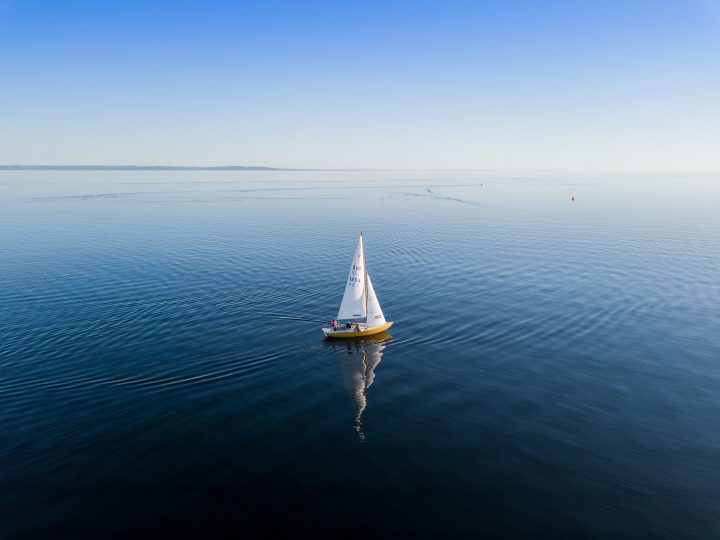
| Boat | Advantages |
|---|---|
| Catalina 22/25 “Pop-Top” | – Standing headroom below deck – Feels much larger than it is – Freedom to move below deck |
| Com-Pac Horizon Cat | – Simple catboat rigging – Quick-rig system – Shallow 2′ draft – Quality construction |
| Marshall Sanderling | – Traditional charm – Easy to maintain – Electric motor option |
| West Wight Potter 19 | – Go anywhere reputation – Packs in amenities – Towable by any vehicle |
| Seaward 26RK | – Quality construction – Big boat features – Retractable keel |
| Corsair F-24 Trimaran | – Very light/easy to tow – Shallow draft – Fast performance |
| MacGregor 26M | – Massive interior space – Planing hull enables speed – Towable by most SUVs |
The best trailer sailor for your adventures will depend on many factors. Like any boat, whatever you decide on will be a compromise – boats always are. But there are plenty of choices out there, no matter what size your tow vehicle is and no matter what sailing adventures you have in mind.
What size sailboat is trailerable?
Even large yachts are routinely transported by towing across land, so the question is more of how big a sailboat can you tow? Your tow vehicle will be the limiting factor. The upper limit for most large SUVs and trucks is usually a sailboat around 26 feet long.
Sailboats are generally very heavily built, with ballast and lead keels. Sailboats specifically made to be trailer sailers are lighter. They may use drainable water ballast tanks instead of fixed ballast and have fewer fixtures and amenities.
To find the best trailer sailer, you need to balance the total tow weight, the ease of rig setup at the boat ramp, and the boat’s draft. Shallow draft boats with centerboards are the easiest to launch and retrieve.
Is a Hunter 27 trailerable?
No. The Hunter 27 is a one of those fixed-keel larger boats built from 1974 to 1984. The boat’s displacement is 7,000 pounds, not including trailer and gear. That alone makes it too heavy to tow by all but the beefiest diesel trucks.
Furthermore, the fixed keels had drafts between 3.25 and 5 feet, all of which are too much for most boat ramps. In short, the standard Hunter Marine 27 is too big to tow for most people.
On the other hand, Hunter has made several good trailer sailers over the years. For example, the Hunter 240 and 260 were explicitly designed for trailering. They have drainable water ballast and shallow keel/centerboard drafts less than two feet.
Is a Catalina 22 trailerable?
Yes, the Catalina 22 is easily trailerable and makes a wonderful weekend sailboat. In fact, there were over 15,000 Catalina 22s made and sold over the years.
The boat’s displacement is 2,250 pounds, which means your total tow weight with trailer and gear will be under 3,000 pounds. This is within the capabilities of most mid to full-size SUVs and light trucks. Be sure to check your vehicle’s towing capacity, of course.
The centerboard on the Catalina 22 is another factor in its easy towing. With the board up, the boat draws only two feet. This makes it easy to float off the trailer at nearly any boat ramp. You should avoid fixed keel versions of the 22 for towing unless you have access to extra deep ramps.
Matt has been boating around Florida for over 25 years in everything from small powerboats to large cruising catamarans. He currently lives aboard a 38-foot Cabo Rico sailboat with his wife Lucy and adventure dog Chelsea. Together, they cruise between winters in The Bahamas and summers in the Chesapeake Bay.
Can someone tell me why no other manufacturer makes pop tops? Those who have them, love them. Makes sense for head space with a trailerable boat too. Catalina stopped making them decades ago, yet people still swear by them. So, why isn’t there any newer models?
MacGregor put pop tops on many of its trailerables
Leave a comment
Your email address will not be published. Required fields are marked *
Save my name, email, and website in this browser for the next time I comment.

Trailerable Sailboats Comparison

Trailerable sailboats come in a variety of shapes and sizes. These vessels can be used for everything from racing to offshore cruising.
In this article, we'll compare six of the most common trailerable sailboat types along with their uses. Additionally, we'll cover vessel design elements that distinguish different types of trailerable sailboats.
The most common types of trailerable sailboats include dinghies, racers, open-top cruising sailboats, pocket cruisers, coastal cruisers, and compact offshore sailboats. These vessels differ by size, rig type, hull type, and weight.
The information contained in this article was sourced from sailing guides and vessel identification records. Additionally, we took into consideration the opinions of sailors with experience on a variety of trailerable sailboats.
Table of contents
Defining Trailerable Sailboats
What distinguishes a trailerable sailboat from any other small cruising craft? The first and most obvious consideration is size. A trailerable sailboat has to meet the dimensional requirements set forth by the Department of Transportation. In other words, it must fit on a trailer that's small enough to travel on the road.
An additional consideration is weight. A trailerable sailboat should weigh less than around 7,000 pounds, as this is the upper towing limit for most typical Class C vehicles. Most trailerable sailboats can be towed behind a typical half ton pickup or SUV.
Additionally, most trailerable sailboats have a swing keel or centerboard. This makes it possible to rest a boat on a low trailer. Most displacement keels are simply too tall, though there are a few exceptions. The maximum trailer load height in most states is 14 ft, which a trailerable sailboat should clear without trouble.
Length is a consideration, though it's not as important as width. The maximum beam of a trailerable sailboat is 8 ft 6 in, as this is the limit for standard trailers on American highways. Typically, trailerable sailboats don't exceed 30 feet in length, as the length to beam ratio of a longer boat would lead to poor handling characteristics.
The final consideration is rigging. Due to height requirements, trailerable sailboats must have collapsible masts. Additionally, rudders and other items that extend beyond the hull must fold or stow in some manner.
Types of Trailerable Sailboats
Trailerable sailboats come in many varieties, weights, in sizes. These vessels are designed for specific uses, such as racing, cruising, fishing, or training. Here are the most common kinds of trailerable sailboats, along with what they're used for.
1. Dinghies
Dinghies are small, open sailing craft that usually don't exceed 15 feet in length. Dinghies are designed for use in protected waters. They're sometimes used to shuttle between an anchored sailboat and the shore. Dinghies are popular racing vessels, and many sailing schools use them for sailing instruction.
Popular Trailerable Dinghies:
- Optimist “Optie” (7 ft 9 in LOA)
- Minto (9 ft LOA)
- Wayfarer (16 ft)
Trailerable racing sailboats are long and narrow. They're designed for speed and agility, not comfort or offshore cruising. These boats generally have a low profile, and they're often open-top and lack sleeping accommodations.
Racing sailboats are lightweight and easy to tow. That said, trailerable racing sailboats are designed for experienced sailors as they're easier to capsize in high winds. These vessels range in size from 15 feet to over 25 feet.
Popular Trailerable Racing Sailboats:
- National 12 (12 ft)
- Sunfish (13 ft 9 in)
- Merlin Rocket (14 ft)
3. Open-Top Cruisers
Open-top cruising sailboats lack a cabin. However, these seaworthy craft are more than capable of coastal cruising in a variety of conditions. Many of these vessels are based on proven workboat designs that date back over a century. These vessels are ideal for harbor sailing and cruising on lakes.
Some people use open-top cruising sailboats for camping, as these traditional vessels are long enough to lay down a cot or sleeping bag. They make a great starter sailboat, as they're safe and easy to store in the garage or driveway.
Popular Trailerable Open-Top Cruisers
- Norseboat (17 ft 6 in)
- Bay Rider (20 ft)
- Com-Pac Legacy (23)
4. Pocket Cruisers
Pocket cruisers are similar to coastal cruisers, though they're distinguishable by their size and amenities. Generally speaking, a pocket cruiser is a small sailboat (under 25 feet in length) that features a cabin, galley, self-draining cockpit, and other 'big boat' accommodations.
Pocket cruisers usually aren't designed for serious offshore cruising, but they are comfortable for extended coastal or inland voyages. They weigh more than racing vessels, as stability is a key aspect of their design. Pocket cruisers are popular because they offer impressive capabilities in a small package.
Popular Trailerable Pocket Cruisers
- Sandpiper (15 ft)
- Sanderling (18 ft)
- West Wight Potter (19 ft)
5. Coastal Cruisers
Coastal cruisers are some of the most popular trailerable sailboats on the market. These vessels usually feature a cabin with a V-berth and a sink, though they occasionally include a head and a complete galley. Coastal cruisers are seaworthy enough for most near-shore and inland weather conditions.
Some adventurous sailors have taken coastal cruisers on extended bluewater voyages, though it's not particularly common. The size and sailing characteristics of these vessels is often not their greatest limiting factor.
There's only so many provisions you can store aboard a 22 to 25-foot sailboat, which is why coastal cruisers are generally considered impractical for offshore voyaging. Coastal cruisers handle well, and they're easy to sail, which is why this type of trailerable sailboat is popular in bays and harbors across the country.
Popular Trailerable Coastal Cruisers
- Cal 20 (20 ft)
- Catalina 22 (22 ft)
- Hunter 22 (22 ft)
6. Compact Offshore Sailboats
Compact offshore sailboats are the rarest and most capable type of trailerable sailboat. These vessels are a big boat in a compressed package. They typically feature a long displacement keel, a wide beam, and a cramped but feature-filled cabin.
These vessels are true cruising boats inside and out. The cabins usually feature a full galley, standing headroom, ahead with a shower, a V-berth upfront, and provisions for navigation. Their rigging is strong enough to handle offshore weather conditions.
Compact offshore sailboats usually have the greatest displacement, as their deep draft and wide beam keep them stable in rolling seas. This also contributes to greater dry weight, which is why they can't be towed by small vehicles.
Vessels of this type are technically trailerable, as they meet the dimensional requirements to travel on the highway. That's said, moving one of these boats is difficult. Owners generally keep these vessels in the water or in dry storage most of the year to avoid the hazard and hassle of towing such a hefty boat.
Popular Compact Offshore Cruisers
- Flicka 20 (20 ft)
- Dana 24 (24 ft)
- Nor'Sea 27 (27 ft)
The keel of a sailboat keeps it stable and tracking a straight course. Most trailerable sailboats have retractable keels of some variety, though some have fixed (permanently lowered) keels. Here are the most common types of trailerable sailboat keels in order of their popularity.
1. Centerboard
A centerboard is a form of retractable keel that's common on the smallest types of trailerable sailboats. A centerboard is essentially a long, thin blade that descends through a hole in the bottom of the boat.
Half of the centerboard remains inside the boat in a box called the 'centerboard trunk.' Centerboards are simple and easy to use, but the centerboard trunk takes up useful space in the cockpit or cabin.
2. Swing Keel
The swing keel is a type of retractable keel that eliminates the inconvenient centerboard trunk. A swing keel is a centerboard with a hinge on one end. It lives in a trunk, typically below the base of the hull, and swings down when in use.
Swing keels allow the sailboat to ride low on a trailer, which makes them a popular choice for pocket cruisers and trailer-sailers. Swing keels raise and lower using a block and tackle system or a crank, usually located near the bilge or under a seat.
3. Fin Keel
Fin keels are less common on trailerable sailboats than they are on larger cruising boats. This type of keel is fixed to the bottom of the hull. A fin keel blade extends between 12 inches and 3 feet below the hull, and it occasionally includes a hydrodynamic bulb on the end. Fin keels are most often found on racing boats.
4. Semi-Displacement
Semi-displacement keels are long, fixed keels that run along the aft 2/3 of the hull. This type of keel is designed for cruising boats that value speed but still want to retain the stability and seaworthiness of a full keel.
Some trailerable sailboats have semi-displacement keels, especially if they're designed for offshore use. The benefits of a semi-displacement keel over a full keel are negligible on a trailer, as both types have a deep draft and high ride height.
5. Displacement (Full Keel)
Displacement keels are traditional and highly seaworthy. This type of keel runs across the entire length of the hull, usually reaching its deepest point at the stern. Displacement keels are found on vessels that are designed for offshore use.
Displacement keels are uncommon on trailerable sailboats, as they're long and cause the vessel to ride high on a trailer. Additionally, the type of vessel that uses a displacement keel is often wide and heavy, which isn't ideal for trailering.
Collapsable rigging is a hallmark of trailerable sailboats. The best trailerable sailboats have collapsible masts that stow securely across the deck. These vessels typically have a fork-shaped mast boot that acts as a hinge, allowing sailors to easily lower and secure the mast.
Many trailerable sailboats are gaff rigged. Though the traditional gaff rig is more complex than a modern Bermuda rigs, it uses a shorter and stronger mast. This has obvious benefits for trailerable boats, as the mast and spars store more easily.
Trailer Types
There are multiple types of trailers used to tow and store sailboats. The most common kind of sailboat trailer is the single-axle trailer. These trailers have one wheel on each side, and you can tow them with a standard Class IV trailer hitch.
Larger sailboats, such as heavy offshore cruising vessels, require something a bit sturdier. These vessels typically ride on dual-axle trailers, which have two wheels on each side.
Larger trailers, such as those with two axles, connect to a standard trailer hitch or to a fifth wheel hitch, which is mounted in the bed of a truck. Fifth-wheel trailers are the least common type of sailboat trailer.
Sailboat Weight and Towing
Dry weight is an important factor to consider when comparing trailerable sailboats. It's important to avoid confusing displacement and weight, even though both values use the same units.
Displacement is the weight of the water displaced by the vessel, whereas dry weight determines how much the boat weighs with its tanks empty and bilge dry. The ideal towing weight of a typical trailerable sailboat is between 3,000 and 5,000 pounds. This weight is within the towing capabilities of most trucks and full-size SUVs.
Larger trailerable vessels, such as many coastal cruisers and offshore trailer-sailers, can weigh 7,500 pounds or more. A sailboat of this magnitude requires a heavy-duty towing vehicle, such as a 1-ton diesel pickup truck.
Best Trailerable Sailboat for Cruising
For protected cruising, such as in a bay or after the river, it's hard to overlook the Catalina 22. This iconic fiberglass sailboat is known for easy handling and fun sailing characteristics. It has a comfortable cabin with plenty of room for a weekend on the water.
For more extensive cruising, especially offshore, the best trailerable sailboat is the Nor'Sea 27. This vessel is ideal due to its spacious interior and full accommodations. It has a full keel for stability, along with a head, galley, and sleeping arrangements down below.
Best Trailerable Sailboat for Weekend Sailing
The ideal weekend cruiser should be easy to tow in fast to rig, as larger and more complex vessels take too much time and effort the launch. With this in mind, it's a tie between the Wayfarer dinghy and the West Wight Potter. Both of these vessels are well-designed, fast to launch, and fun to sail.
Related Articles
Daniel Wade
I've personally had thousands of questions about sailing and sailboats over the years. As I learn and experience sailing, and the community, I share the answers that work and make sense to me, here on Life of Sailing.
by this author
Most Recent

What Does "Sailing By The Lee" Mean?
October 3, 2023

The Best Sailing Schools And Programs: Reviews & Ratings
September 26, 2023
Important Legal Info
Lifeofsailing.com is a participant in the Amazon Services LLC Associates Program, an affiliate advertising program designed to provide a means for sites to earn advertising fees by advertising and linking to Amazon. This site also participates in other affiliate programs and is compensated for referring traffic and business to these companies.
Similar Posts

How To Choose The Right Sailing Instructor
August 16, 2023

Cost To Sail Around The World
May 16, 2023

Small Sailboat Sizes: A Complete Guide
October 30, 2022
Popular Posts

Best Liveaboard Catamaran Sailboats
December 28, 2023

Can a Novice Sail Around the World?
Elizabeth O'Malley
June 15, 2022

4 Best Electric Outboard Motors

How Long Did It Take The Vikings To Sail To England?

10 Best Sailboat Brands (And Why)
December 20, 2023

7 Best Places To Liveaboard A Sailboat
Get the best sailing content.
Top Rated Posts
© 2024 Life of Sailing Email: [email protected] Address: 11816 Inwood Rd #3024 Dallas, TX 75244 Disclaimer Privacy Policy

FOR ALL YOUR PARTS NEEDS
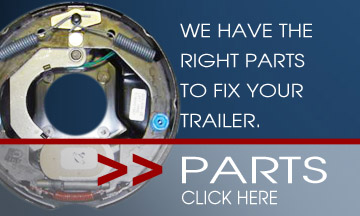
START YOUR SEASON RIGHT

MAKE YOUR TRAILER UNIQUE

BUILD YOUR CUSTOM TRAILER

- Motor Boat/Rib Trailers
- Jet Ski Trailers
- Yacht Trailers
- Marina Trolleys
- Showroom Dollies
- Trailer Vans
- Yacht Stands
- Special Offers
- Become a Distributor
- Register Your Trailer
- Maintenance
- What’s Happening?
- Ocean Bottle
- Bespoke Design
- Brokerage & Part Exchange
- Servicing & Repairs
- Video Gallery
- Testimonials
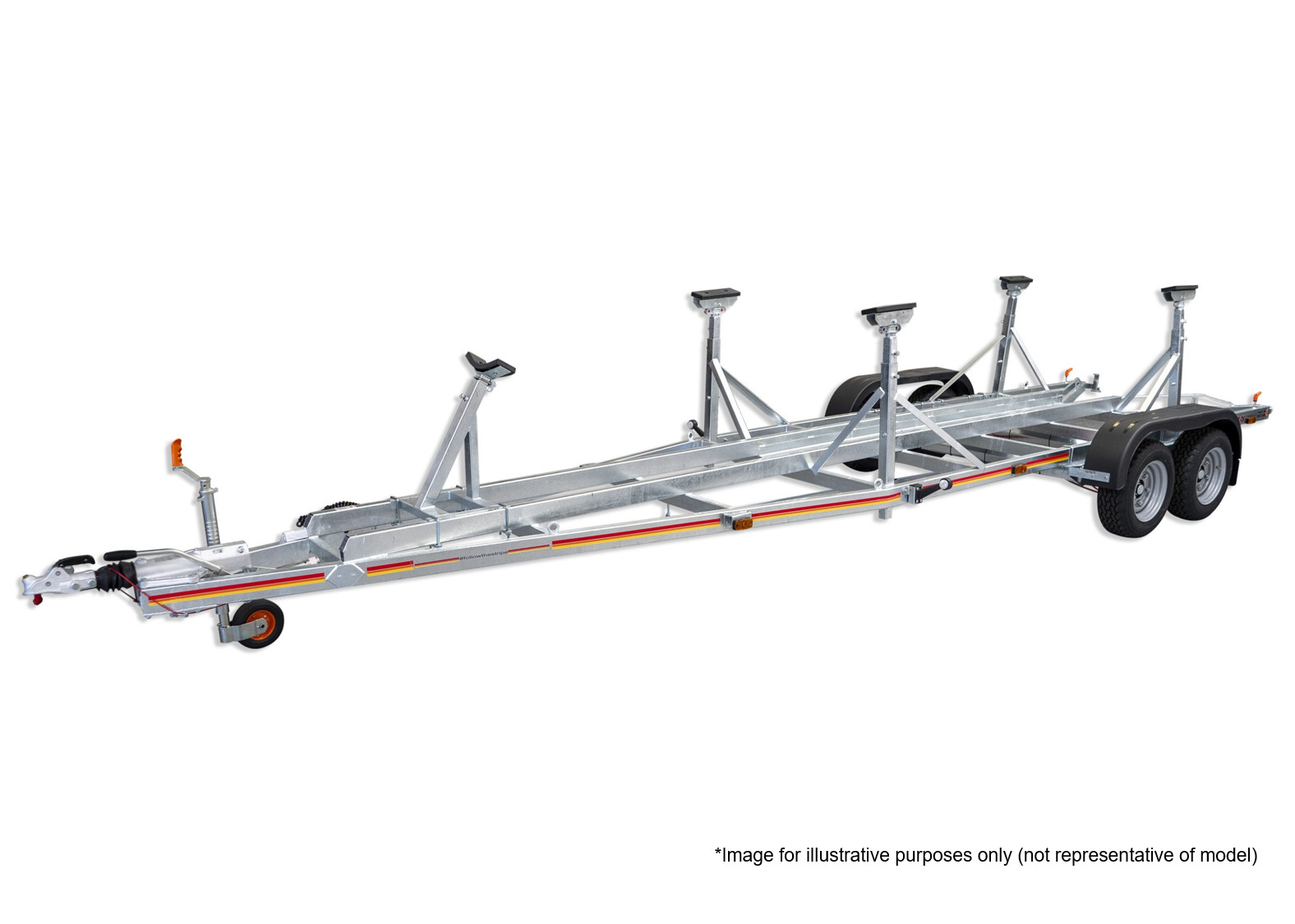
DK3000 Deep Keel Boat Trailer
£ 6,128.00 £ 5,106.67 (ex. VAT)
| Gross Capacity (kg) | Load Capacity (kg) | Length Capacity (m) | Tyre Size |
|---|---|---|---|
| 3000 | 2300 | 6.2 | N/A |
Description
Trailer spec.
- EU/Exporting?
- Watch Product Video
The DK3000 Deep Keel boat trailer is perfect for fixed or lifting keel sailboats up to 2300kgs, with a chassis setup to suit your boats size and shape.
This model is a twin axle, braked trailer.
DK3000 Deep Keel Trailer Standard Features:
- Hot-dip galvanised throughout for added corrosion protection
- Torsion beam axles and waterproof bearings, giving a virtually maintenance-free long life
- Sealed bearings, twin speed winches, snubber and light bar
- Cushioned side steps
- Ratchet handle
- LED waterproof side and forward markers
- Four telescopic adjustable quick release hull supports
- Padded chocks and stem snubber
- Full EU certification for export purposes
Optional extras:
- Twin axle hub flushing kit
- Spare wheel including bracket
- Float’em poles
- Ratchet straps
SBS Trailers are the largest boat trailer manufacturer in the UK with an enviable reputation for producing a superior trailer at a competitive price. All trailers are fitted with premium running gear as standard.
Do you need your trailer delivered? Get in touch now to find out more about our nationwide delivery service.
All SBS trailers include a limited lifetime warranty on chassis structure – Find out more here.
Call our sales team on 01902 754133 or e-mail: [email protected] for more information on our full range.
*Image purely for illustrative purpose. Product may differ from illustration based on your boats requirements
Trailer shown features a drop centre and Variable Keel Channel
| Weight | 0.00 kg |
|---|---|
| Docking Arms | SBS Docking Arm Kit |
| Flushing Kit | Flushing Kit |
| Length & Width | 1550mm x 6500mm |
All our trailers come with the highest EU specification, which includes:
If you do not need a full EU specification, please contact us to discuss alternative specifications available.
Click here for full explanation
Related products
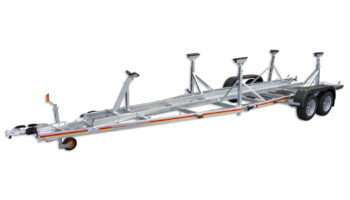
DK2000 Deep Keel Boat Trailer
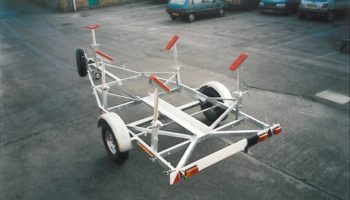
FK1900 Fin Keel Boat Trailer
Dk1800 fin keel boat trailer.
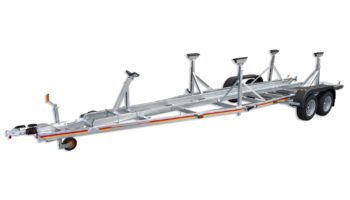
DK3500 Deep Keel Boat Trailer
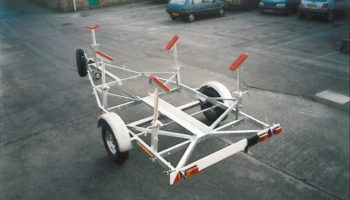
FK1500 Fin Keel Boat Trailer
Fk1600 fin keel boat trailer, dk2600 deep keel boat trailer.
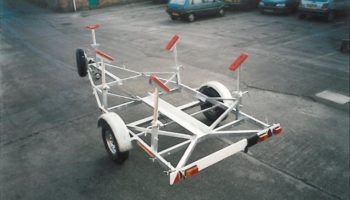
FK1300 Fin Keel Boat Trailer
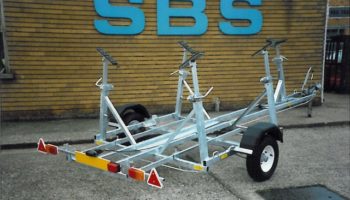
FK1000 Fin Keel Boat Trailer

For security purposes we no longer perform transactions through email, through the phone, nor through payment platforms (such as PayPal, Cash App, Zelle, Venmo, etc.). All future payments must be made in person at our only office located in Deland. Thank you for your understanding.

AUTHORIZED DEALER of the finest BOAT, MOTORCYCLE, UTILITY TRAILERS and MORE !

(386) 734-5244
DeLand, Florida

Sailboat Trailers
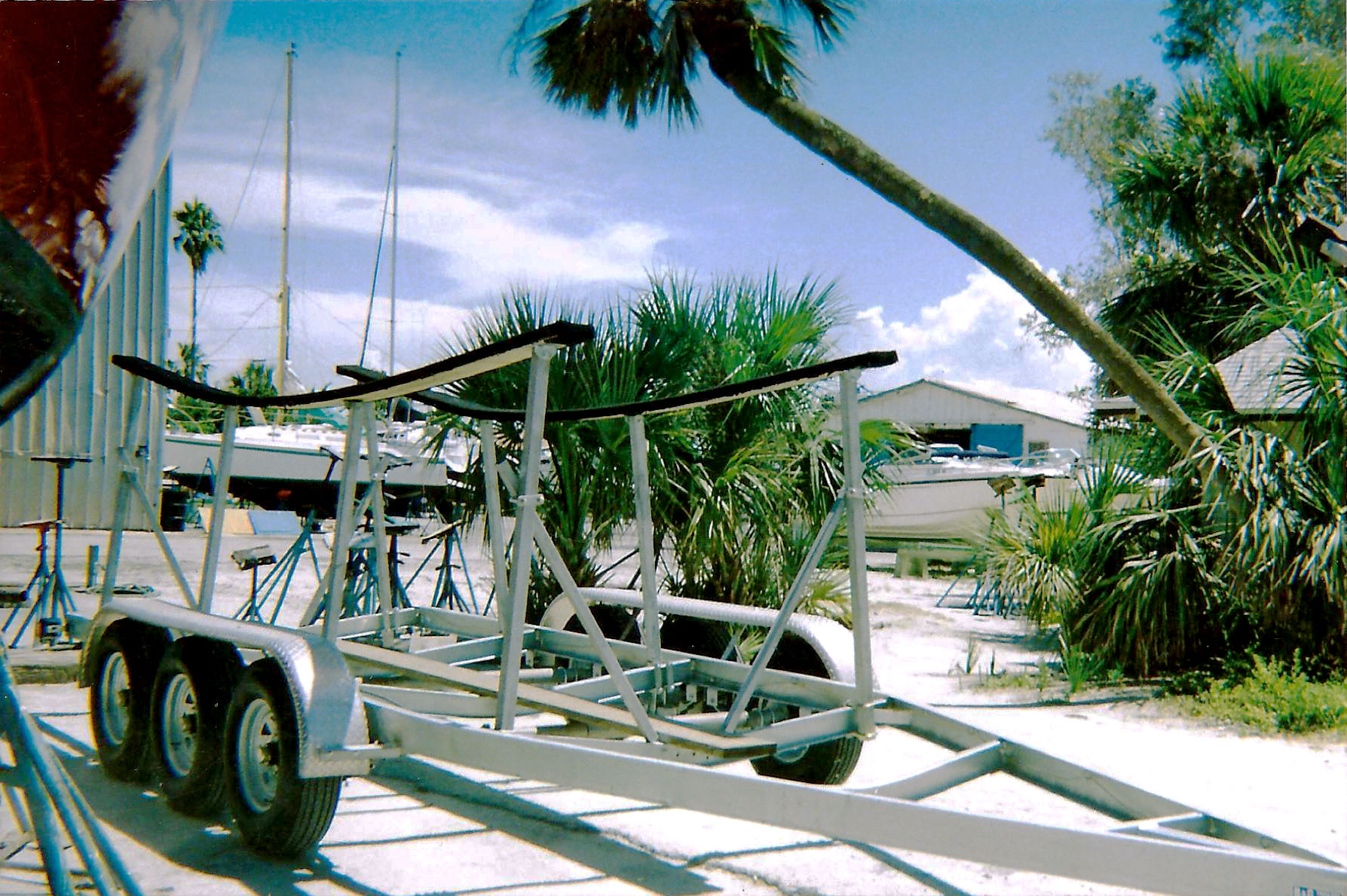
Have you just bought the sailboat of your dreams and can’t wait to get it into the water? Has your sailboat been in the water too long and now needs to be pulled for cleaning or moving? No problem! We can address your needs with a sailboat trailer built just for you.
At B & G Trailers, we take pride in the products we produce and the services we provide. Therefore, we feel that the only way that a sailboat trailer is right for your sailboat is when it is designed and built specifically for your sailboat. This ensures that the trailer and sailboat fit together perfectly!
Sailboat trailers differ substantially from boat trailers, especially for high, fixed keel sailboats. Fixed keel boats are inevitably taller than boat or sailboats with centerboards or lifting keels. And even though most of the weight is in the ballast down low, fixed keel sailboats are subject to tipping over while most other boats do not.
At B & G Trailers, your sailboat trailer will be built by our professional staff that has almost 100 years of combined experience in building and welding trailers. We will build your trailer with your individual needs in mind. And since our trailers are custom built for your sailboat, you can be assured that you will have a trailer that fits your sailboat perfectly. We guarantee it!
We build our trailers to carry your sailboat safely and securely. And with the proper care, our trailers will be trouble-free for many years to come. We know that the better the quality of our trailers, the more apt they are to maintain their appearance and retain a higher resale value. And we do all of this at the best price possible! Give us a call. Let us build a trailer for you now!
For the most part, our trailers are designed for the specifications listed below. However, we will be happy to custom build or modify a trailer when what you need is different from what is listed below.
| Trailer Type | For boats that are | That weigh |
|---|---|---|
| Sailboat | 10 to 34 feet | 150 to 21,000 lbs |
Our sailboat trailers include the following features:
- Caster Jack – Holds up the bow for hitching.
- Winch & Winch St and – Pulls the boat out of the water onto the trailer and secures it during traveling.
- Loading Guides – During recovery, loading guides help identify the left and right sides of the trailer that is underwater. When backing the empty trailer down the ramp, they help to identify the rear of the trailer when the trailer itself is not visible.
- 2 X 6 Carpeted Bunks – Aligned and formed to let the hull of the boat rest on the trailer.
- Safety Chain – Keeps the trailer attached in the unlikely event your trailer separates from the tow vehicle while in transit.
- Submersible LED Lights – Lights designed to prevent water from entering the housing cavity.
- Side Marker Lights – For added visibility at night.
- 2 Year Warranty

- Forums New posts Unanswered threads Register Top Posts Email
- What's new New posts New Posts (legacy) Latest activity New media
- Media New media New comments
- Boat Info Downloads Weekly Quiz Topic FAQ 10000boatnames.com
- Classifieds Sell Your Boat Used Gear for Sale
- Parts General Marine Parts Hunter Beneteau Catalina MacGregor Oday
- Help Terms of Use Monday Mail Subscribe Monday Mail Unsubscribe
Trailer Sailing a 25' Full Keel
- Thread starter Persistence
- Start date Jan 24, 2017
- Forums for All Owners
- Trailer Sailors
Persistence
Is anyone here trailering a 25' full keel boat and launching from boat ramps? If so, how long should the tongue extension be?
Percy, Doesn't sound like fun to me. You going to do this regularly or once a season? I've seen/heard of folks using a tow strap to do it. As Dava390 about that one! Doesn't always go as planned and sometimes costs you a rudder. Other that that, a 12 foot extension is probably the most you could deal with. That's about 16 feet of tubing with a 4 foot overlap. Some have the spare tire mount swing down to support the tongue. Neat idea.
svchickadee
This company builds a good trailer. You might give them a call.. http://triadtrailers.com/triad-trailer-gallery/sailboat-trailers/sailboats-25-30-feet/1321-2/
Persistence, I don't see this as any more problem of trailer launching any fixed keel boat. In this case, it is not so much a problem with "full keel," and more a problem of depth of keel. I have helped trailer launch J/24, Santana 20, and Impulse 21 boats, which all have about a 4' draft fixed fin keel. (Your CD 25 looks to me like a 25D as opposed to the original 25. CD25 lists 3' draft, CD25D lists 3.5'.) Most of the trailers for these fixed keep boats have a 25' long tongue extension and an auxiliary "jockey wheel" near the front of the trailer. It's all about getting the boat in deep enough to float off the trailer. Many people who don't have an extending tongue will have a jockey wheel, and will strap launch the trailer, where a towing strap is connecting trailer and tow vehicle. A deeper/steeper ramp will make launching easier, as the trailer won't have to go in the water as far, but the increased angle between the trailer and water surface can make retrieving more difficult on a steep ramp, because starting off, the bow will be at the bow stop, but as the boat settles on the trailer as it pulls out, it can often move back. (Had this problem with the Santana almost every time. He has like a 3' tray for the bottom of the 2' long keel bottom to sit on. As long as the keel sits more than 1/2 way on the tray, we can get it forward to where it needs to be on the tray.)
Nice video, One thing that makes it easier is the rollers instead of bunks.
Karyon said: Nice video, One thing that makes it easier is the rollers instead of bunks. Click to expand
Towed my J24 about 7,000 miles a year when campaigning. More often than not, we craned it on and off. But, there were several times I had to ramp launch and retrieve it. I used a tow strap hooked on my hitch ball and looped around the trailer tongue. My trailer had a set of keel guides to guide the keel to the center of the trailer and I made them removable with bolts to allow me easy access to the keel for working on it. My trailer was patterned off the J24 Triad trailers. I preferred not to ramp launch/retrieve but it's definitely doable just takes a little longer and you run some risk of banging up the keel which was a big factor for us..
Brian S said: . A deeper/steeper ramp will make launching easier, as the trailer won't have to go in the water as far, but the increased angle between the trailer and water surface can make retrieving more difficult on a steep ramp, because starting off, the bow will be at the bow stop, but as the boat settles on the trailer as it pulls out, it can often move back. (Had this problem with the Santana almost every time. He has like a 3' tray for the bottom of the 2' long keel bottom to sit on. As long as the keel sits more than 1/2 way on the tray, we can get it forward to where it needs to be on the tray.) Click to expand
LeeandRick, nope. I don't see the benefit of that addition from the video over an extension or a strap for launching. It would be difficult to back and steer that. Do truckers ever back down a tandem? (I don't know.) Where the heck do they store it? Yes, the front of the trailer needs a robust rolling wheel (plastic wheels on a trailer jack don't seem good enough to roll well to me) for a long extension or a strap. Karyon, I don't think rollers make it any easier than bunks to launch sailboats. Powerboats, yes, sailboats, no. Most sailboats are not a flat run aft from amidships the way power boats are (well, new style sleds are, but most recreational sailors don't have a sled inspired trailerable boat) so the deeper midships portion of the boat still needs to float over the aft rollers. My roller pod trailer is like this, and trust me, the boat isn't rolling on or off with a tug of a dock line or winch strap. It floats on and off. I did winch on my Harpoon 4.6, but it's a dinghy and it's supposed to have the keel strip riding on trailer rollers. And it's not a rockered, belly-like hull. Being a planing capable hull, I guess it's more flat aft like a powerboat, so...
Thanks for all your input.
Brian S said: Karyon, I don't think rollers make it any easier than bunks to launch sailboats. Powerboats, yes, sailboats, no. Most sailboats are not a flat run aft from amidships the way power boats are (well, new style sleds are, but most recreational sailors don't have a sled inspired trailerable boat) so the deeper midships portion of the boat still needs to float over the aft rollers. Click to expand
Attachments
![full keel sailboat trailer IMG_0609[1].JPG](https://forums.sailboatowners.com/data/attachments/110/110547-16189cf04e0047678db6d4f02aeaf63c.jpg)
Crazy Dave Condon
I use to with my equipment launch up to 36 foot sailboats off long ramps and even larger ones with hydraulic trailers and even off tractor trailers. The key with any launch and retrieval of a keel boat is the trailer, the proper tow vehicle which to do the job with, experience and of course the ramp itself. First going into an unknown ramp area, you need to know the length of the ramp, any overhead wires, putting the mast up if necessary which will require a crane and so forth. Experience and safety are most important. So call and check out what ramps will work for you. In addition, never attempt to launch from a bulkhead or bridge like I use to if you do not have experience. My key over a bridge was long straps attached to a single point (not a spreader style) behind the mast, straps tied together at the railing but not to the railing, no wind, power boat standing by in the water and of course with the state hwy department permission which many came out to see this. This is for the experienced only. You catch my drift On a ramp, I use to have a long wheeled dolly attached to the tongue and with safety chains attached to the tow vehicle and trailer. First on the ramp I backed down to the water, chocked all wheels and left the safety chains on. I backed to the chocks and when fast, then detached with the trailer but still leaving safety chains attanched and of course I knew my ramps. Then detached the safety chains, moved forward and attached the long wheeled dolly extension attaching the safety chains as well. Then pulled up slowly off the chocks removing the chocks. The forward supports on the trailer were lowered and guiding the trailer into the water. When the boat started to float off the trailer, supports were lowered when needed. The key here was the forward supports lowered so the boat would not catch on the trailer. I had another fellow in the water or boat upwind with a line holding the boat so it would be kept straight or in parallel with the trailer particularly with a wing keel so the keel would not catch. Sometimes with no wind, I would abruptly stop but going slow and the boat would slide off. Reversed the procedure for retrieval. Had to do this at Kerr Lake/Buggs Island along the VA/NC border as there was no travel lifts on the lake due regs. Largest boat was a either a 45 or 49. Again experience. Also launched over bulkheads too. I always made every crane to extend supports even though the crane operator did not think so. I watched another fellow once who did not have the crane to extend the outriggers or supports and the crane tilted over. Threw that inexperienced operator off jumping into the seat and released as appropriately the hoist. Saved the boat and crane from and accident. Called the company and was thanked for that. In additiuon when trailering, permits needed for each state if over width, over length, over height and so on regardless which state the boat trailer is in. Also you have to be carful when turning so the boat and trailer will not catch particularly with mast on top of the boat. I could go on but again exerecise good judgement focusing on safety is the guide. .
Thanks for your reply Chris Mac. Would you happen to have a pic of your extension set up?
Persistence said: Thanks for your reply Chris Mac. Would you happen to have a pic of your extension set up? Click to expand

chris mac said: These are the best pics I got right now. That centre channel has w smaller diameter tube steel inside. The hitch is on the smaller one. To extend, block trailer tires,pull one keeper pin, and slowly pull forward. After 10' or so, there is another hole for the pin. In the spring I'll take a better pic if I remember Click to expand

Jerry Zitterkopf
I currently use 2 winches on the trailer at the bow to get the position right every time no matter the ramp angle. One winch pulls in the normal direction the other lifts the bow. By lifting the bow the boat is achieving the same angle as the trailer, and when you pull it to the bow stop with the forward pull winch it is right where it needs to be when pulling out of the water. I'm pulling our boat out in a couple of days and will get some pictures (maybe video if someone is around). The 2 winch idea works on our O'Day 23 and some other smaller boats we have had, but not sure about larger displacement, especially wide stern, boats. I like to put the boat in the same place to avoid pressure points from the bunks and the same tongue weight every time. I was hoping to finish fabrication of a better way to attain the same location with one winch. The flu this weekend has slowed my progress. This involves a pivot point at the forward edge of the keel with all boat supports forward of the pivot mounted on this pivoting structure including the winch. This all pivots up as you pull out of the water and the stern settles on to the fixed bunks. Once clear of the water you pin this structure to the main trailer frame for travel. There are many more good benefits to this, like doing away with the winch, keel guides that remain parallel to the water line and shallower float off/on depths. Once I get video and pictures I will open up a discussion here to refine the idea. This needs to be an open source project since there are so many trailers and boat designs. I know most of you don't care but there are a few of us seeking the perfect trailer.
Persistence said: Is anyone here trailering a 25' full keel boat and launching from boat ramps? If so, how long should the tongue extension be? Click to expand
How trailerable is a Cape Dory 25? - Cruisers & Sailing Forums
- This site uses cookies to help personalise content, tailor your experience and to keep you logged in if you register. By continuing to use this site, you are consenting to our use of cookies. Accept Learn more…

Sail Far Live Free
Camping on a keel - trailer sailers for cruisers.
| Here's a throwback to , our Helms 25 and very first boat |
| The end! |
Great compendium Kevin. Also a sensible choice for those who've done the conventional cruising and are looking at phase 2 options. All the best.
While I'm not sure how old this post is, Ill add another boat to consider using your criteria above. We have a S2 7.9 Gran Slam which we cruise locally in Milwaukee and also take a few weeks out of the summer and trailer to better cruising grounds. We pull it with a Chevy Suburban and are quite please with having a performance boat that is straight forward to launch and rig. The beam is actually over legal limit at 9', but these boats have been trailered extensively to one design regattas over many years and I have never heard of anyone being stopped by the hi way revenuers.
Post a Comment
Popular posts from this blog, top 10 favorite affordable bluewater sailboats, go small and go now 5 pocket cruisers to take you anywhere.

Escape to the Sea: How to get from the Great Lakes to the Caribbean

Visit our Popular Forums
- Monohull Sailboats
- Multihull Sailboats
- Powered Boats
- General Sailing
- Antares Yachts
- Fountaine Pajot
- Lagoon Catamarans
Cruising Business
- Boat Classifieds
- General Classifieds
- Crew Positions
- Commercial Posts
- Vendor Spotlight
Life Aboard a Boat
- Provisioning: Food & Drink
- Families, Kids, & Pets Afloat
- Recreation, Entertainment, & Fun
- Boat Ownership & Making a Living
- Liveaboard's Forum
Seamanship, Navigation & Boat Handling
- Seamanship & Boat Handling
- Training, Licensing, & Certification
- Health, Safety, & Related Gear
- Rules of the Road, Regulations, & Red Tape
Engineering & Systems
- Const. / Maint. / Refit
- Product / Service Reviews
- Electronics: Comms / AV
- Electrical: Batts / Gen / Solar
- Lithium Power Systems
- Engines & Propulsion
- Propellers & Drive Systems
- Plumbing / Fixtures
- Deck Hdw: Rigging / Sails
- Aux. Equipment & Dinghy
- Anchoring & Mooring
Photo Categories
- Member Galleries
- Life Onboard
- Sailing in the Wind
- Power Boats
- Cruising Destinations
- Maint. & Boat Building
- Marine Life
- Scuba Diving & Divers
- General Photos
Recent Photos

Listing Categories
- African Cats
- view more »
- Crew Wanted
- Crew Available
- Enhance Your Account
- Meet the Mods
- Meet the Advisors
- Signup for The Daily Cruiser Email



































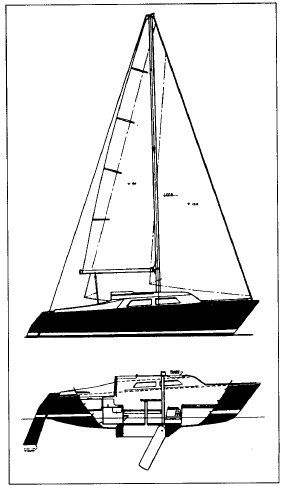
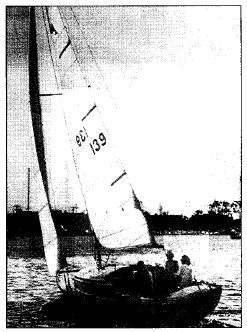
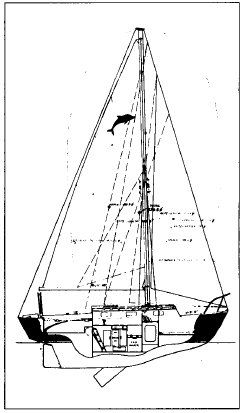
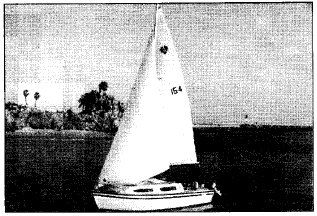
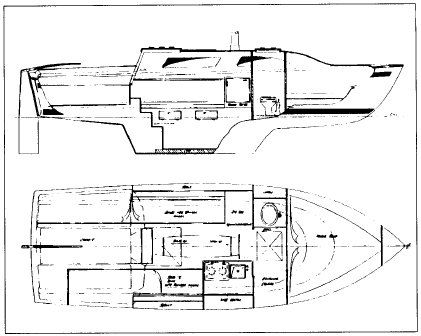
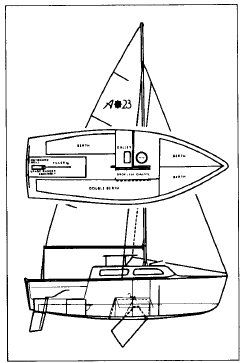

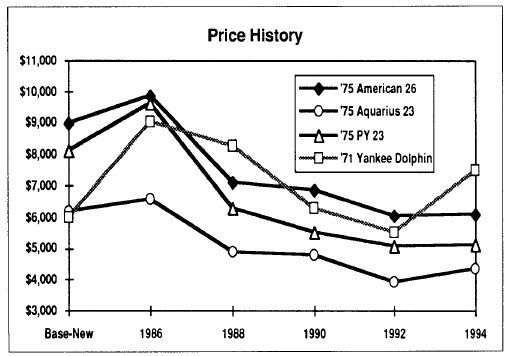





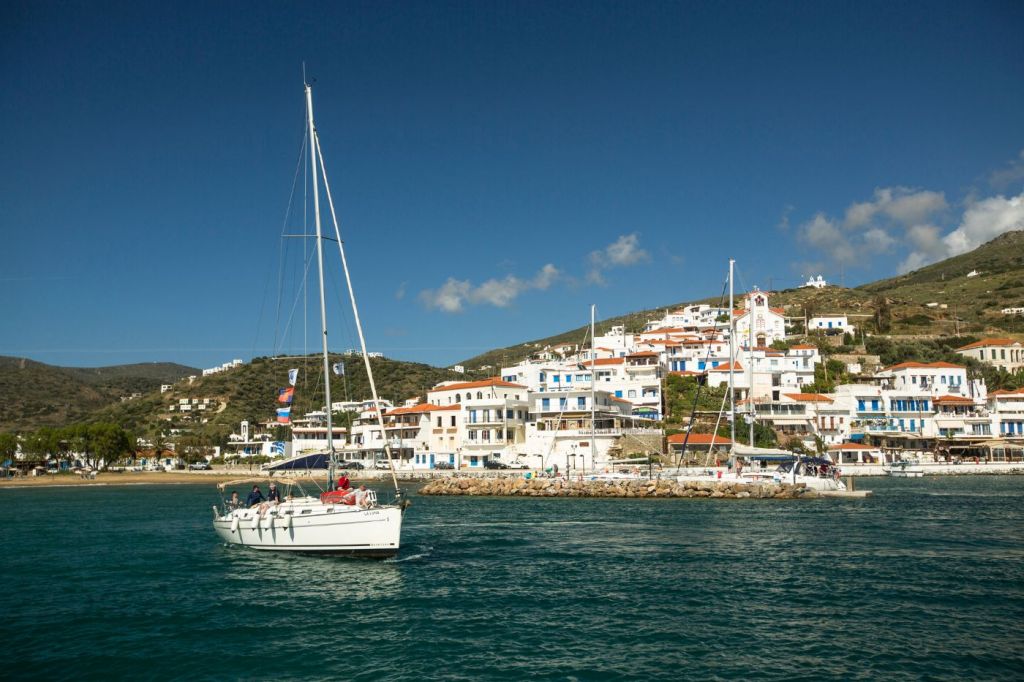
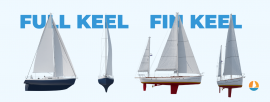

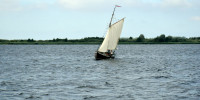
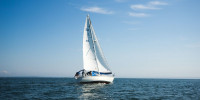




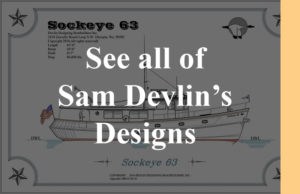

IMAGES
VIDEO
COMMENTS
The Cape Dory 28 is another fantastic choice for a full-keel, trailerable sailboat. Known for its solid construction, seagoing capabilities, and classic design, it provides a great sailing experience for anyone looking for a larger, more capable boat that can still be towed. ... The Size of Sailboat You Can Trailer. You can trailer sailboats ...
custom sailboat trailers 25′ - 30′ ... beneteau first 285. cape dory 25 d. cape dory 27. capri 25. catalina 25 swing keel. catalina 250 wing keel. catalina 25 wing keel. catalina 27. catalina 28 wing keel. cheoy lee. colgate 26. com-pac 27. contessa 26. falmouth cutter. frisco flyer. gary seal. international dragon. irwin 30.
We build custom sailboat trailers. Welcome to Custom Sailboat Trailers (281) 844-4458. Custom Sailboat Trailers ... Rubber bushing under keel board to take the shock off the keel. Painted trailer for Catalina 25. J24 ; Hunter 26 ; Oday24 ; $2300 ; 24 ft frame for 30 ft boat for three axles ; This trailer was made for a 5500 lb boat.
We combine our modular pods with a keel board and winch stand options on any number of Load Rite or 5 STARR bunk models to conform to many sailboat applications. Each trailer must be specified on an individual basis. To get started, download the attached sailboat trailer specifications document before contacting your local Load Rite dealer.
Whether your keel is a swing, bulb, full, fixed, fin, shoal, wing or retractable, your custom sailboat trailer will be designed to effectively support and protect the keel. Also, properly placed screwpads or treated lumber bunks will support your sailboat's hull and bulkheads. This ensures the safe and sturdy transport of your precious rig!
And remember, the Hunter 27 is still a trailer sailor. The boat features a shoal draft of under 4-feet and a displacement of less than 8,000 pounds. The Hunter 27 is available used, and this boat is still produced and available brand-new by Marlow-Hunter. ... One of the most legendary small trailerable cruisers is the full-keel Pacific Seacraft ...
7 Best Trailerable Cruising Sailboats. Catalina 22/25 "Pop-Top". Com-Pac Horizon Cat for Classic Coastal Cruising. Marshall Sanderling — Small, Portable, Classy. West Wight Potter 19 — The Tiny Go-Anywhere Sailboat. Seaward 26RK with Retractable Lead Keel. Corsair F-24 Trimaran - Sporty Sailing.
Triad Trailers - Watch Hill 15 Full Keel. Contact Us; Find a Trailer; Quote Request; To Place Your Order Call (919) 782 - 6007 or email [email protected]. ©2021 Triad Trailers.(919) 782 - 6007 or email [email protected]. ©2021 Triad Trailers.
Other misc. gear This is one of the largest trailerable sailboats that can be pulled by a 1/2 ton pickup and probably a full sized SUV. Weight is 4800#, the keel is 1800#, and the trailer is about 900#. Engine and gear is about another 400#. NADA is about $13,375.
Some trailerable sailboats have semi-displacement keels, especially if they're designed for offshore use. The benefits of a semi-displacement keel over a full keel are negligible on a trailer, as both types have a deep draft and high ride height. 5. Displacement (Full Keel) Displacement keels are traditional and highly seaworthy.
The DK1800 Fin Keel Boat Trailer is perfect for fixed or lifting keel sailboats up to 1250kgs, with a chassis setup to suit your boats size and shape. This model is a twin axle, braked trailer. DK1800 Fin Keel Trailer Standard Features: Hot-dip galvanised throughout for added corrosion protection. Torsion beam axles and waterproof bearings ...
Contact Us. Find a Trailer. Quote Request. To Place Your Order Call (919) 782 - 6007 or email [email protected]. ©2021 Triad Trailers. For over 35 years, Triad Trailers, has been providing custom sailboat trailers with innovative designs & quality craftmaship for all types of watercrafts.
The DK3000 Deep Keel boat trailer is perfect for fixed or lifting keel sailboats up to 2300kgs, with a chassis setup to suit your boats size and shape. This model is a twin axle, ... Call our sales team on 01902 754133 or e-mail: [email protected] for more information on our full range. *Image purely for illustrative purpose. Product may ...
150 to 21,000 lbs. Our sailboat trailers include the following features: Caster Jack - Holds up the bow for hitching. Winch & Winch St and - Pulls the boat out of the water onto the trailer and secures it during traveling. Loading Guides - During recovery, loading guides help identify the left and right sides of the trailer that is ...
CD25 lists 3' draft, CD25D lists 3.5'.) Most of the trailers for these fixed keep boats have a 25' long tongue extension and an auxiliary "jockey wheel" near the front of the trailer. It's all about getting the boat in deep enough to float off the trailer. Many people who don't have an extending tongue will have a jockey wheel, and will strap ...
As Catalina's first boat the C22 must have widely surpassed Frank Butler's initial sales expectations, having sold more 15,000 hulls since 1969. The original MkI was launched with a cast-iron swing keel, but all three versions (MkI, MkII & MkIII) could also be had with a fixed fin keel. Obviously trailer sailors will opt for the swing keel.
It depends on the ramp and the trailer. You need a deep ramp and a trailer that carries the boat low and has a long tongue extension. I had a 24' Morgan with a stub keel that drew 36" on a trailer. Generally, ramps are standardized at 5' deep at the end of the ramp in typical boating-season water levels. Larger lakes (e.g. the Great Lakes) have somewhat deeper public ramps.
One of the larger boats on this list, the Seaward 26 RK, is still easy to move over land with a trailered weight under 6,000 pounds. The boat alone displaces 3,800 pounds, with 1,200 lbs. of that in retractable ballast with a bulb on the bottom. The keel lifts with an electric motor and is simple to operate.
Hunter 22. This one has to make the list because it is immensely popular. Rightfully so. It is small enough to be transported on a trailer, plus it has a lifting keel that makes the draft only 30 centimeters when up - but over a meter when down, so it still has to say a lot in terms of performance.
Our full keel powerboat and lobster boat trailers will provide the perfect amount of support whether your boat is 17 or 50 feet in length, and will protect the hull from damage while the trailer is in use. Full keel boat trailers require special consideration to ensure that they meet your needs perfectly. All of our custom trailers come with a ...
Draft is 2′ 4″ for trailerability, but there is no centerboard, and due to the keel's extreme width, you can imagine that windward performance is poor. Unfortunately, we have no owner feedback on this boat to corroborate our assessment. American 26 Cabin Layout. The boat sold new in 1974 for $8,995 base.
Here are 13 good full keel sailboats that are worth considering: Nicholson 32. Island Packet 380. Folkboat 25. Cape Dory 36. Vancouver 32. Freya 39. Wylo 2. Tradewind 33.
Devlin Boats, Sailboats. The Lit'l Coot 18 Full Keel is a is seaworthy and capable motorsailor with enough space on board for the organized sailor and enough potential to keep serious travelers satisfied. She is the sister to the original Lit'l Coot with the same hull and the same tendency for balanced performance and maximal use of space ...